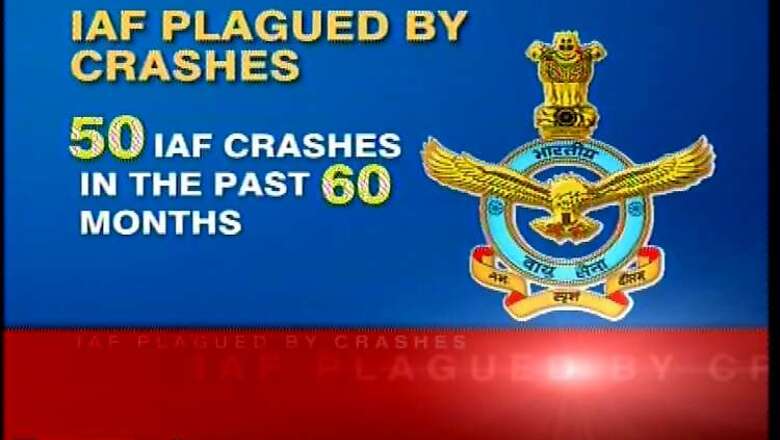
views
New Delhi: The rate of military accidents is becoming a matter of worry as India lost seven aircrafts in the just last three months. Recent air-crash of Jaguar trainer near Allahabad raised the count of fighter accidents to six in this calendar year. With ageing fleet and depleting squadron strength, keeping air accidents under check is also a big challenge for Indian Air Force.
Down to just 35 fighter squadrons, IAF got yet another jolt on Tuesday morning when a twin-seat Jaguar fighter went down 13 kms southeast of Allahabad. Fortunately, the two pilots managed to bail out safely in a planned ejection. It was the sixth fighter to crash since January 2015.
Commenting on this Wing Commander SS Birdi, spokesperson of the IAF said, "It is a cause of worry, but what needs to be understood is that every incident, or every accident that takes place in the Air Force, we take a very serious view of it."
The IAF data on flight crash shows that there have been 50 IAF crashes in the past 60 months. Since January, two MiG-27, a Sukhoi-30 MKI, a MiG-21, a Mi-35 attack helicopter, a hawk advanced jet trainer have crashed.
From June 2010 onwards, besides the fighter jets, transport planes and even the sophisticated special operation plane, the C-130-J have crashed.
Each plane costs million of dollars and the crashes, especially of the Sukhoi, have raised questions on the readiness of the 200-strong fleet of the plane. Recently, Parliamentary Standing Committee on defence questioned frequent crashes. The panel headed by Major General BC Khanduri (retired), now a BJP MP from Uttarakhand, made scathing remark by saying that these accidents have been consistent over the past decade… the rate of accidents has not come down....A detailed audit conducted by Air Hqtrs on crashes revealed that in most of the cases its technical defect responsible for the crashes and in rest its human error.
The high rate of crashes is a matter of worry especially when IAF is battling with fast-depleting fighter strength. Against sectioned strength of 42 fighter squadrons, IAF is reduced to merely 35 due to phasing out to MiG's. The situation is only to worsen with the virtually obsolete MiG-21s and MiG-27s headed for long-delayed retirement. In such a scenario purchase of 36 Rafale fighters from France won't be a big relief as the challenge is increasing.
Military data revealed that neighbouring China already has three times the number of fighters India has. Pakistan too is fast closing the gap as Pakistan Air Force already has over 21 active combat squadrons, with at least four more on the way.
The heavy reliance of foreign vendor and slow acquisition is the root cause and is hurting the fitness of IAF. The answer lies in indigenisation but snail pace of indigenous programmes like Tejas are glaring example of delays. Its over 26 years and IAF is still waiting to get its first Tejas squadron. Experts feel that PM Narendra Modi's ambitious programmes like Make-In India are good start but it will take at least two decades to change the scenario.

















Comments
0 comment